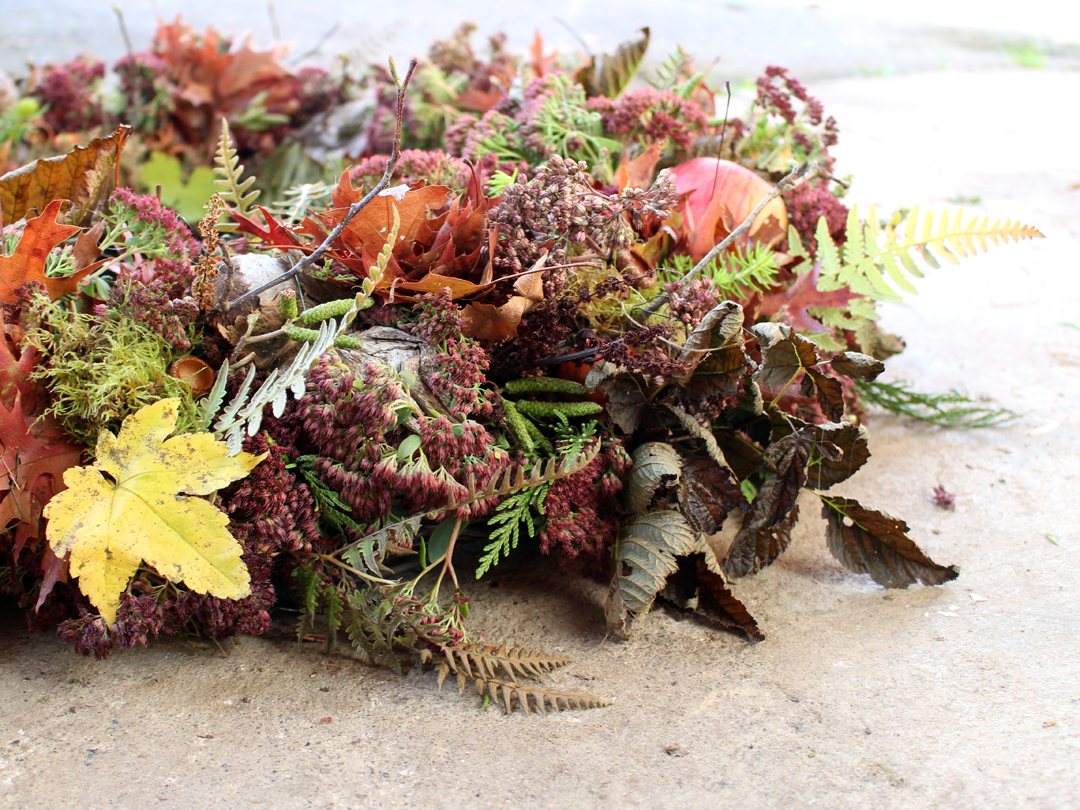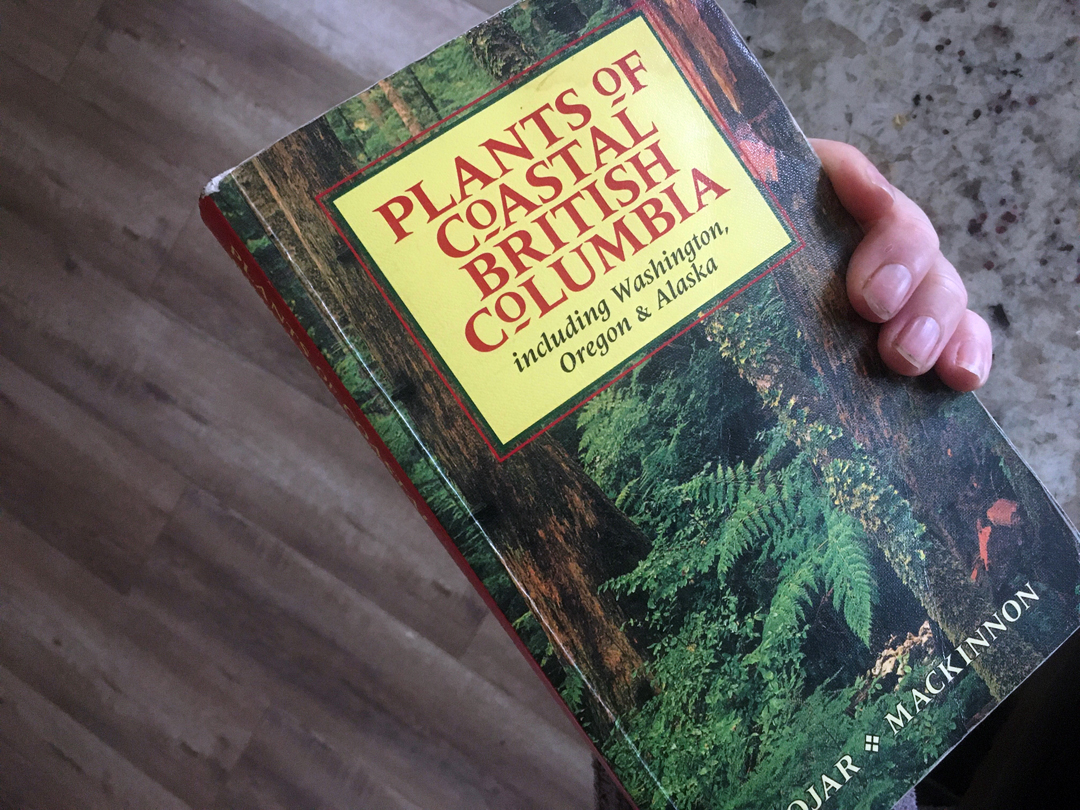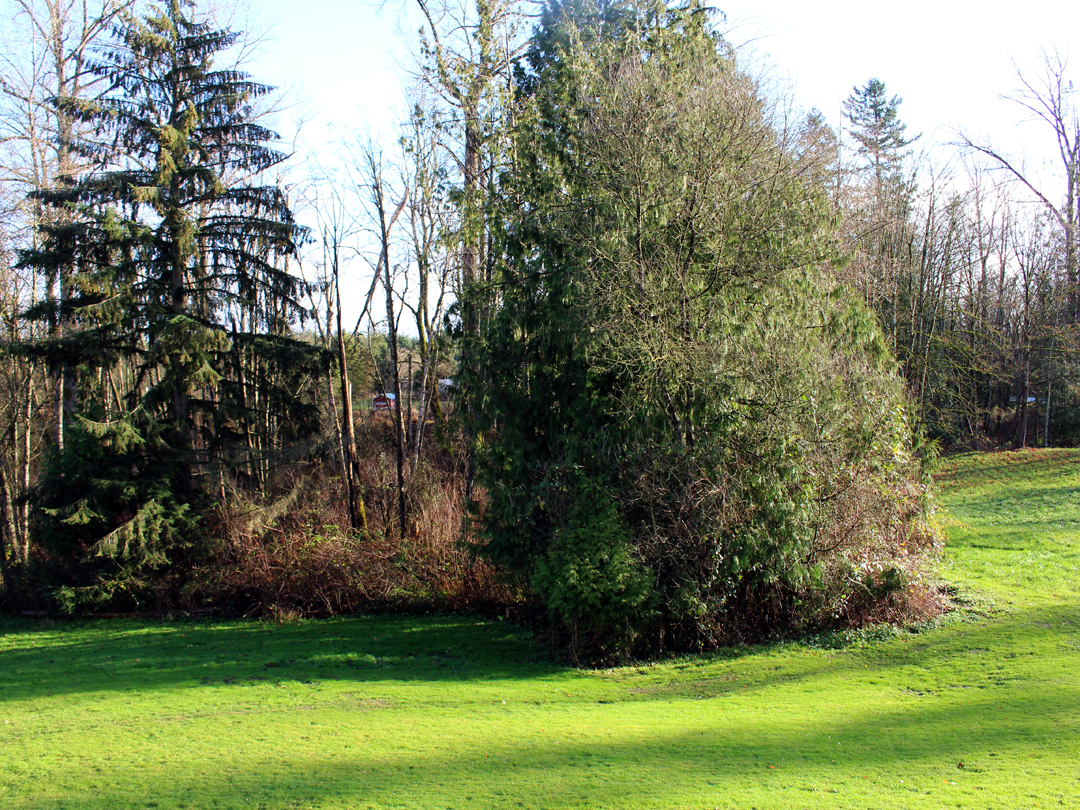Foraging has become a significant part of my design process and natural foraged items have come to play a considerable role in my finished designs over the past couple of years. Foraging is as much an action as a practice of art-making that takes one’s ability to see seemingly insignificant things and display them in a fresh light. I’ve been working with flowers for many years (you could almost say, my entire life) and I have to say that in more recent years, foraging has truly expanded the breadth and depth of my design. Whether you are a farm-based florist, a florist in a brick-and-mortar shop, a home-based designer, or a maker of beautiful things for your own enjoyment, I encourage you to try on a pair of forager boots for size and give it a whirl! You’ll be amazed at the ways your creativity expands!
Want to dive right in? Come along with me as I forage up a fabulous wild-style wreath from my farm! Get inspired. Get creative. And have fun!
My combined background in the floral industry and Bachelor of Science degree in Environmental Studies has been a great help to me as I’ve approached foraging. Since foraging has become such a major role in my design, I wanted to share a little about my foraging best practices: where and how to forage, and some tips and tricks I’ve learned along the way.

A naturally textured fall wreath foraged from wildflowers and plants.
Know Your Species
First of all, I think it is important to know your species. If you are a professional florist or a farmer, you’ll already know the names of the various cuts that you work with. In my opinion, you should learn to be able to identify the natural items you are foraging as well, for a couple of reasons. First, having such a knowledge base can inform you of whether you are dealing with invasive or threatened species or sensitive ecoysystems. Secondly, product knowledge is important for any professional. Wouldn’t it be embarrassing if you were asked by a customer about a cut that you are selling, and you didn’t know the name of it! If you aren’t a professional florist and are interested in foraging for the joy of it, you will likely still find this helpful. Pick up a taxonimical reference book for your area and take along it with you! If you are in coastal British Columbia as I am, my favourite reference book is Plants of Coastal British Columbia including Washington, Oregon & Alaska by Jim Pojar and Andy MackKinnon.

Use a taxonomical reference book for flower foraging to get to know your species and surroundings.
Where To Forage
We actually forage primarily on our own farm of just under 5 acres. It has been a positive side of having hills and woods on our farm – we’ve been able to make use of things growing naturally in areas that we can’t make good use of for farming our livestock or growing crops. But if you don’t have access to such a property, don’t worry! You can forage ANYWHERE. Foraging is much about opening your creativity and seeing what is around you! Ditchlines, spare lots, boulevards, backyards, and natural spaces are all great options. Check with neighbours you see pruning their shrubs or with owners of empty properties. Take advantage of the season’s change from summer to fall and grab those hydrangea blossoms before they go into someone’s’ pile of yard waste. Perhaps you even know a landscaper who can keep you in mind for fresh clippings as they clean up yards around town. Just keep in mind that you may need a license for foraging natural areas and never to take from private property without permission.

Yarrow (Achillea millefolium) occurs naturally and can be foraged for use fresh or dry in designs.

Let your neighbours know that you are interested in their garden clippings. You’ll never know the treasures you can source!
How To Forage
PREPAREDNESS – Foraging is often opportunistic so keep that in mind and be prepared wherever you go. For me this means I never go anywhere without a set of cutters in my car. If I’m walking, I’m typically wearing a backpack for collecting. Keep good footwear, gloves, a long-sleeved shirt, cutters, buckets, water, maybe even hydration solution in your car. Odds are that when you spot something you’d like to grab it will be on a drive you don’t normally do, or it will be when you are on your way someplace in your nice shoes! If you keep spare items in your car at all times, it makes it very easy to forage at a moment’s notice.

Wear a backpack so you can forage while you walk.

Keep buckets and bags in your car so you can forage for flowers at a moment’s notice.
DON’T BE A TRAFFIC HAZARD – Alright so I’ve already touched on footwear and gloves to protect you from thorns and scratches. This one’s more about protecting others as much as yourself. Be aware of your surroundings as you are driving and never slam on the brakes without checking your rear-view mirror. You may feel the need for haste; but truly, you are probably the only person on the road who is wanting to grab those fallen branches from the side of the road, so take your time and drive safely. You can always turn around and come back for a treasure that you’ve spotted.
CARE & HANDLING – Being able to identify the plants you are using will help with this. Various stem types have general rules of thumb for best handling – woody stems often benefit from being crushed or side-cut, some plants like a little water, some like a lot. Stems that produce milkiness when cut will likely need to be singed or dipped in boiling water. Once you know what you have you can do a little research on how to handle it; but my bottom line rule on this is NEVER sell a cut that you haven’t already tested. Make sure you know how to handle it and know how long it will last – by this I mean test the vase life yourself at home and don’t rely on someone else’s word on this. Native and wild plants and flowers can be fussy and haven’t been developed for horticulture so they won’t all be happy as cutflowers! Your needs will vary depending on whether you want cuts to hold up in summer heat at a roadside flower stand or for lasting in a bouquet that you sell. Maybe you just need something that will hold up for one day at an event. Set yourself up for success and do a test run first.
PRICING – I see this one come up often so I think it is worth breifly mentioning. Your foraged items are not FREE! If you aren’t sure how to price, try looking up wholesale costs on a particular item or average filler or focal wholesale costs as a starting point. Keep in mine the time, expertise, and materials it takes to harvest. If you include foraged items for free in your designs it will cause problems in consistency for you down the road.

Our farm and forest where we forage for much of our materials while maintaining a healthy ecosystem.
ENVIRONMENTAL CARE – Okay, this is a big one and the one that I’m asked most often about. How sustainable is foraging? Is foraging okay for the environment? This is a tricky one to answer because it really depends on a number of things including the manner in which a person handles harvesting. Are they able to identify sensitive ecosystems? Do they know not to harvest heavily on a slope so as not to cause slope instability? Can they identify threatened or rare species that should be left alone? On the other hand, what about invasive plants that choke out native ones and reduce biodiversity and species richness in an environment? I feel very happy about harvesting those!
My general rule is this: tread lightly, take some and leave some. I never take everything from a natural space – I try to harvest in a patchwork. In my opinion, if you don’t take too much, the space will stay healthy and be able to produce for a long time. If you take care of it, you’ll be able to go back and glean many times in the same area.
I hope this helps to clarify what it is that we are doing here at van H acres and also provides some tips and tricks for your own foraging. Perhaps you’ve never through of foraging before and I’ve inspired you to try something new! Either way, my final tip is keep your eyes open and BE CREATIVE. That’s what this is all about. We all have surroundings specific to us and not one of us is alike in this. Keep an open mind, let creativity come to you, and enjoy how this changes your floral design!
Already a forager or inspired to try it? Drop me a note in the comments and let me know – I love to hear from like-minded individuals!





0 Comments